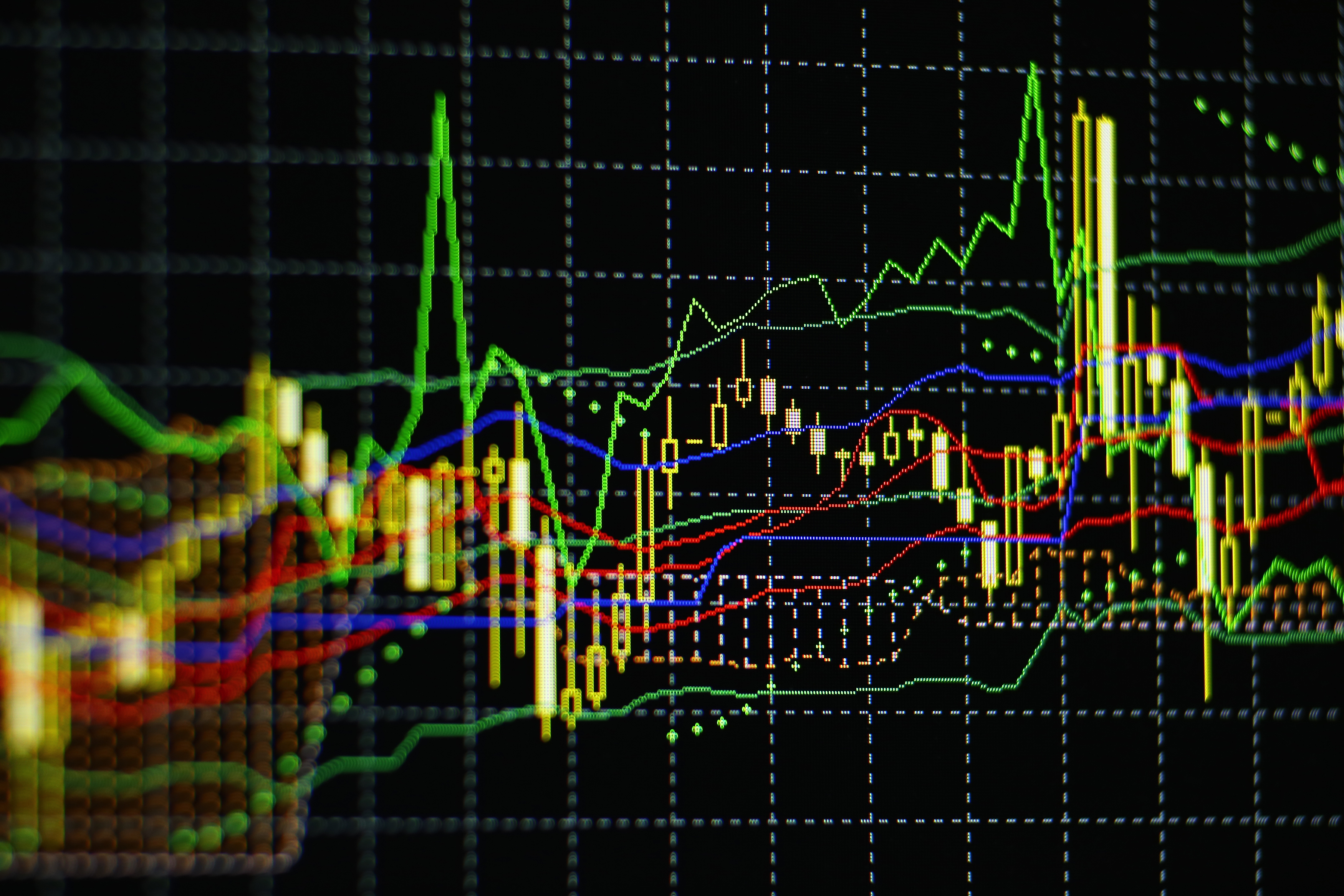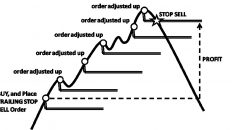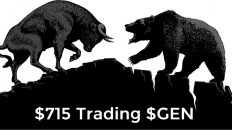Introduction and History of Day Trading Stocks:
So you’re interested in day trading stocks? There is an old joke on Wall Street that goes,
“When you buy and sell a stock that yields a profit, you can call it a good trade, but when you buy it and it goes down and you haven’t gotten out yet, it’s an `investment’.”
That works for people who are dabbling in the market and can afford to be passive. I’m not like that, and I am assuming that if you are reading this, you aren’t either. No time for waiting and hoping. If you’re in it, you are in it to win it, and if you bet wrong, cut your losses early and go on to the next trade.
Day trading stocks and day trading strategies have always existed since there were markets, but it was the initial use of computers that allowed for individuals and small traders who were not with large brokerage firms or banks to enter the arena.
 Several decades ago, a small group in New York learned that by routing their various orders via computer, they could execute hundreds to thousands of buy and sell orders from their little office to numerous NASDAQ market makers across the country, making them think that there were more buyers and sellers following their stocks than in reality and moving their prices up and down accordingly, allowing the group to rake in millions in the process. This small group became known as the SOES (Small Order Execution System) Bandits and their pioneering use of computers for day trading stocks demonstrated the power of digital technology in democratizing trading of the market to individuals.
Several decades ago, a small group in New York learned that by routing their various orders via computer, they could execute hundreds to thousands of buy and sell orders from their little office to numerous NASDAQ market makers across the country, making them think that there were more buyers and sellers following their stocks than in reality and moving their prices up and down accordingly, allowing the group to rake in millions in the process. This small group became known as the SOES (Small Order Execution System) Bandits and their pioneering use of computers for day trading stocks demonstrated the power of digital technology in democratizing trading of the market to individuals.
Independent houses that engage in stock trading have become popular as Hollywood subjects, from the notorious film, “The Wolf of Wall Street”, which starred Leonardo DiCaprio and depicted the pump and dump exploits of the now infamous Stratton, Oakmont brokerage firm to the Showtime series, “Billions”, which depicts a hedge fund that takes more sophisticated approaches to its day trading strategies, some perfectly legal, while others somewhat more dubious.
There are software tools available from a variety of banks and other firms that give individuals the power to track the market, see information, and execute buy and sell orders that was formerly only in the possession of large firms. Granted, with hedge funds and institutional program trading, the sheer trading volume and volatility of markets due to this exponentially increased digitization has upped the ante, but the little guy or gal now has the ability to ride the tide on their own without waiting for a broker to call them back like in the olden days.
Bids, Offers, Liquidity and Market Makers:
The goal of day trading stocks, by definition, is to be in and out of a position within the same day. While many traders will ride momentum that may let a stock run up or down for days, weeks, or even months, day trading carries no overnight risks of holding a position that can fall due to news released after or before market hours that takes execution of exit prices out of the trader’s control. When a day trader zeros out in cash for the day, he or she can sleep at night without worrying about how to get out the next day.
Not all trades make money. The wise trader is disciplined, rational, and keeps his or her own emotions in check while observing the sentiment of others. If a trade is losing and hits a maximum loss, sell it and move on; don’t let pride enter the equation, as it is a recipe for further losses. When making money on a trade going in your direction, be ready to sell once your target is met and, don’t get too greedy, since the market can turn on a dime.
The Wall Street slogan, “Bulls make money, Bears make money, Pigs get slaughtered” is very true, as many traders have had to learn from harsh experience.

With new trading resources, individual traders now have the ability to see which market makers are on the bid or offer side for a stock, and can also see the position sizes. The SOES Bandits made many a day trade small fortune by riding a stock up, then shorting it and pounding a handful of market makers with a rush of small sell orders to spook them into backing off their bids by as much as a point within the span of a couple of minutes, then buying thousands of shares back as the market climbed back and other traders joined in the buying when they saw the interim undervalued price. The SOES Bandits would also reverse the process. As many as 10,000+ order tickets at the end of a day could be generated by a team of 4-5 people.
Now, I’m not saying that we can replicate the SOES Bandits with a home computer. However, you and I can now use a computer to see which market makers are being bullish or bearish, and the ones that are more aggressive in either direction are the ones that will give you, as a trader, your liquidity. If you want to get shares of a stock, go to the ones with stock to sell at the lowest price. Conversely, the ones with the largest position and highest bids will be the go to parties to get you out of your position.
Liquidity is one of the most crucial factors in trading penny stocks, where the lack of bulk institutional price support may result in only one lead market maker and perhaps only 3-4 others which may be good for only a few hundred shares at much wider spread. In these instances, the trading of the stock may be subject to circumstances having nothing to do with the company’s business prospects, yet can still impact you. The primary trader making the market for a stock can get sick and the person subbing may be unfamiliar with the stock and be sitting all day with a 75 cent bid/ask spread when the spread is normally only 12 cents. If the other market makers are basically along for the ride and taking their cues from the lead market maker, their spreads will be 85 cents or greater. Not helpful if you need to liquidate your position today and you are holding thousands of shares.
Day Trading Stocks Using Technical Analysis:
Most investment banks who publish their own research are grounded in fundamental analysis, which focuses on a company’s management, financials, business model, institutional ownership, and other factors that would constitute a justification for buy and hold strategies.
Traders, on the other hand, may consider fundamentals, but are much more concerned with what the market itself thinks, and a day trader lives or dies in a trade by their ability to read, interpret, and act upon that interim day market sentiment. If there is heavier than normal volume in a stock, it could be based on news about a company’s competitor, a new piece of government legislation, a rumor about a management change, or any number of factors that may have absolutely zero relevance to the company’s intrinsic fundamentals. For long term investors, this may just be a blip on the calendar of a 36 month investment. For a day trader, it could mean intraday volatility of a couple of points, which can mean thousands in profits if riding along on a trade as the trend goes either way between 9:30am and 4:00pm EST.

Technical analysis, which relies on lots of quantitative math and chart analysis to show trends, accurately reflect market sentiment. The psychology of the market can result in drastic market swings. In December, Brian Ross of ABC News erroneously reported that General Michael Flynn had been instructed by President Trump to contact Russia during the 2016 campaign, resulting in a 350 point drop in the Dow within minutes. ABC retracted and corrected the story later in the day, but the damage was already done, although astute traders, seeing the opportunity, were able to capitalize on the volatility and ride it down and back up.
Analysis of unusual volume, trading that breaks moving average calculation floors or ceilings, relative strength trends – these and many more quantitative analysis aspects are utilized by thousands of traders in stocks, commodity futures, Foreign Exchange, interest rates, and various other markets. The mathematical calculations measuring human psychology on an intraday basis are one of the key tools at a day trader’s disposal and often are the backbone of day trading strategies that can be quantified and evaluated by their success or failure ratios. (Incidentally, technical analysis is my principle technique for day trading stocks so don’t expect to see a lot of fundamental analysis here!)
Day Trading Strategies Using Options:
You think the next Apple iMac Pro is going to be a huge winner and Apple stock can possibly make a jump tomorrow of as much as 4-5 points. AAPL shares are at $178. If you bought 1000 shares, you could day trade and make up to $5000 in a day on a move like that. Only problem is you have only $5000 to risk on a single trade, which might get you a whopping 26 shares including fees. 1000 shares would cost $178,000 – maybe not an amount of liquidity you have on hand. So how do you make a play?
If you have the stomach for the added risk of leverage with the acknowledgement that you can lose the entire trade amount, you could look into trading AAPL options, which are, in layman’s terms – limited time bets on how much above or below a particular price the stock will be by a certain expiration date. Without getting too much into the minutiae of options trading, a call option (betting the stock will go up) or a put option (betting a stock will go down) can be a way to leverage your money for day trading stocks normally beyond an average income person’s reach if you can exercise discipline and are prepared to be focused. Each option contract represents a hundred shares. Call options for the end of the current month with a 175 strike price are being offered at 4.45, or $445 for 1 call option = 100 shares. This is calculated as 3 points of intrinsic value (stock was at $178) + 1.45 of time value, or the premium on the momentum of the stock and also reflecting the amount of interested players wanting to trade that series of options. $5000 can theoretically be sufficient to buy 10 contracts, equivalent to the 1000 share play you are an anticipating for tomorrow. Be aware that each day on the calendar that is a step closer expiration date, you lose some premium on the pricing, which is the time value markup above the strike price. If you take your eye off the ball and AAPL is all of a sudden at $174, your options will automatically be at perhaps only 65 cents. But if you are correct and AAPL all of a sudden cracks $180, those 10 calls will theoretically be trading at 6.50+, which would equate to $2000 profit, and you can then ride point for point upwards if you are correct in your hunch.
I hope you find these day trading tips and strategies helpful. They’ve worked for lots of others, so why not you?





Add comment